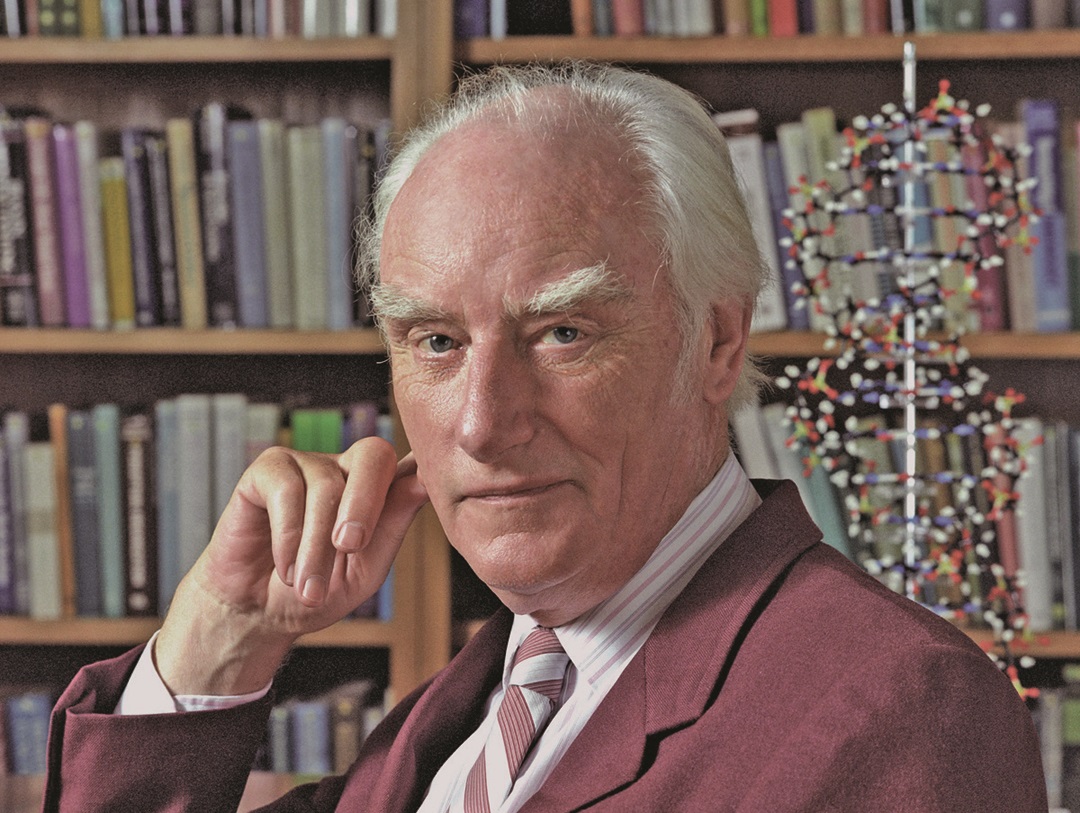- History Home
- People, Leadership & Service
- A Legacy of Excellence
- History & Impact
- Meetings Through the Years
- Resources
Obituary - Francis Harry Compton Crick (1916 - 2004)Biography | Publications | Curriculum Vitae | Videos | Slides | Articles | Obituary
Francis H. C. Crick (1916 - 2004)ACA RefleXions, Fall 2004
 Francis Harry Compton Crick, who shared the 1962 Nobel Prize in physiology or medicine with James Watson and Maurice Wilkins for discovering the structure of DNA, died July 28th after a long battle with colon cancer. He was 88. To those who knew him best, it was Crick’s insatiable curiosity about life and the creativity of his mind that set up him apart from others. In recent years, he put these qualities to work in an attempt to find the neural correlate of consciousness, a problem he defined as the search for the link between the mind and the brain. Although he was a pathfinder in this young field, he knew that it would take younger minds than his to one day untangle the myriad mysteries of the human brain. When asked what he hoped his future contributions would be, Francis said, "To excite younger people to study the problem of consciousness." Christof Koch, a professor of neuroscience at Caltech and one of Crick’s collaborators said “Francis delighted in playing the important role of devil’s advocate for several generations of young researchers." Born in Northampton, England, on June 8, 1916, Francis Crick showed an early curiosity for all things, but for science in particular. To help answer his many questions, his parents Harry Crick and Annie Elizabeth Wilkins bought their young son a Children's Encyclopedia that covered a vast range of topics, from history and music to science. But the subjects that intrigued him the most centered on things like the nature of the galaxy, chemistry and how things were made of atoms. Later, Crick studied physics at University College in London, where he received a Bachelor of Science degree in 1937. He began studying for his Ph.D., but this work was interrupted by the out- break of war in 1939. During World War II, he worked as a scientist for the British Admiralty, helping to design magnetic and acoustic mines. When the war ended, however, Crick found himself less interested in physics and somewhat vague about what he wanted to do with his future. "I still didn't know much about anything so I could go into whatever I wanted," Crick recalled in 1997 during an honors seminar lecture at Rutgers University. "I used what I call the Gossip Test to decide what I wanted to do," he said. "The gossip test is simply that whatever you find yourself gossiping about is what you're really interested in. I had found that my two main interests which I discussed the most were what today would be called molecular biology, what I referred to as the borderline between living and the nonliving, and the workings of the brain." In 1947, Crick turned to studies in biological research at the Strangeways Laboratory in Cambridge. At that time, Crick knew little biology and practically no organic chemistry or crystallography, however he soon went beyond the fundamentals in each of these areas. In 1949, he joined the Medical Research Council (MRC), and in 1951 met James Watson, a young American graduate student. Two years later the two men used their respective knowledge of genetics and x-ray diffraction, along with x-ray images from Rosalind Franklin and Maurice Wilkins, to determine the structure of DNA. Crick and Watson subsequently suggested a general theory for the structure of small viruses. Later, in research with Sydney Brenner, Crick developed ideas about protein synthesis (the adaptor hypothesis) and the genetic code. By 1966, sensing that the foundation for molecular biology was adequately set, Crick turned his attention to embryology. Then, in 1976, he joined the Salk Institute for a sabbatical year away from the MRC. The following year, he left the UK for the Salk Institute in La Jolla, CA, where he pursued his interests in understanding the brain and the nature of consciousness. In the epilogue of his book What Mad Pursuit: A Personal View of Scientific Discovery, Crick says that the brain sciences today are reminiscent of the state of molecular biology and embryology in the 1920s and 1930s. "The brain sciences still have a very long way to go," he writes. "But the fascination of the subject and the importance of the answers will inevitably carry it forward. It is essential to understand our brains in some detail if we are to assess correctly our place in this vast and complicated universe, we see all around us." A new Center for Computational and Theoretical Biology at the Salk Institute will bear Francis Crick's name. Aside from more than 130 published papers in his life, Crick also wrote several books including Molecules and Men (1966), Life Itself (1981), The Astonishing Hypothesis, and The Scientific Search for the Soul (1994). In addition to the Nobel Prize, his honors included the Lasker Award, the Award of Merit from the Gairdner Foundation, and the Prix Charles Leopold Meyer of the French Academy of Sciences. He was a member of the U.S. National Academy of Sciences, the Royal Society, the French Academy of Sciences and the Irish Academy. Crick is survived by his wife, the artist Odile Speed; two daughters by this marriage, Gabrielle A. Crick and Jacqueline M-T Nichols, both residing in England; a son by a previous marriage, Michael F.C. Crick of Seattle, and six grandchildren. Crick was divorced from his first wife, Ruth Doreen Dodd, in 1947. |
